I’ve been away for work through most of March; I was only home a total of six days in the whole month. Consequently, I have probably missed most of the goings-on around the place. However, one thing I finally didn’t miss was this little Eastern Horseshoe Bat.
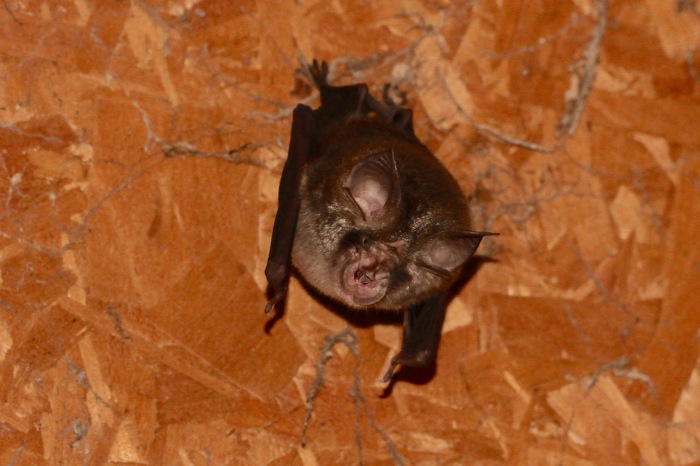
At the front of our house is a small storage room or annex, which we usually keep shut at night. On the odd occasion when the door is left open, one of these horseshoe bats invariably uses it for a rest after its early-evening foraging. Alister has seen it numerous times, but this was the first time I got to see it for myself. Not much bigger than a mouse, they get their name from their horseshoe-shaped nose.
Like most small bats, they echolocate to find their way in the dark. This little guy/gal was constantly screaming while I was photographing it, as it clearly didn’t like the light and was keen to find an escape route. It always amazes me that what I perceive as a quiet night’s sky (most bat calls are far above human hearing range) actually contains a constant stream of piercing screams, chatters and squeaks made by bats.
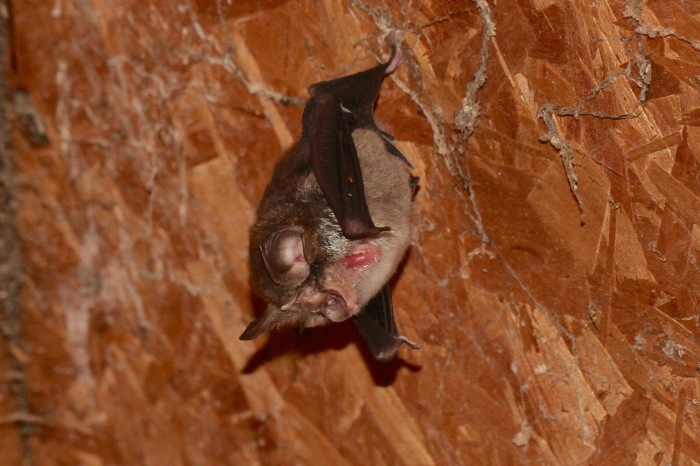
We had another Chiropteran guest yesterday, in the form of this Little Red Flying-fox. All three local species of flying-foxes are regular nocturnal visitors to our property, but this is the first time one has spent the day sleeping here. This one was in a Silky Oak (Grevillea robusta) near the house. I don’t mind if the odd one stops by for a day or so, so long as a camp of thousands doesn’t suddenly descend on us!
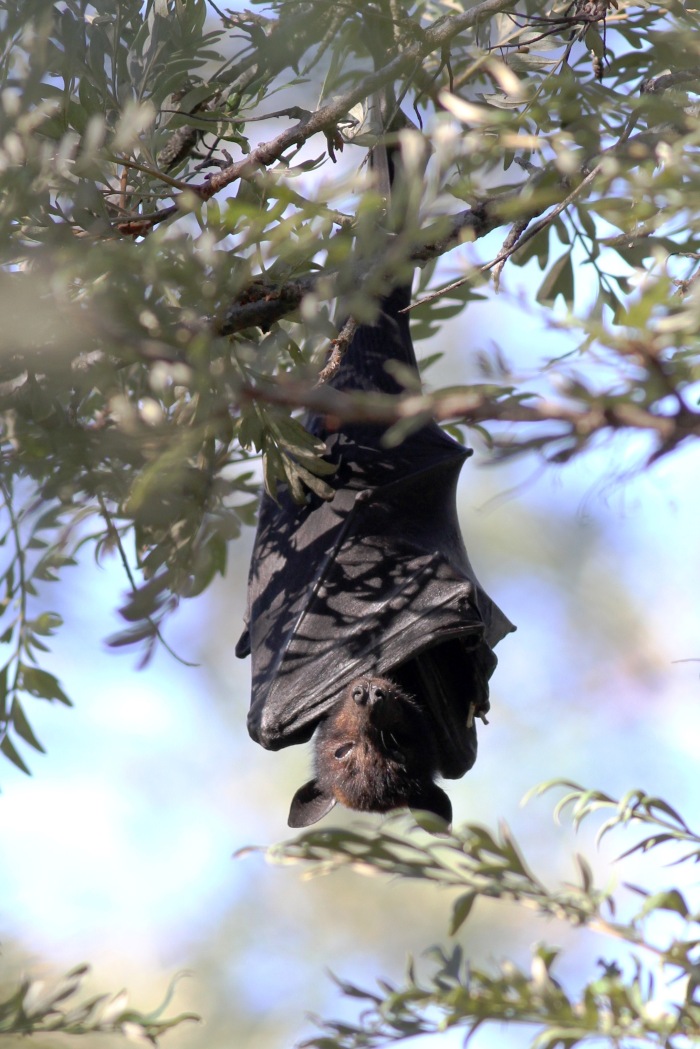
March finally saw the end of the horribly hot, dry summer we just endured. While we didn’t receive the huge rainfalls experienced by much of southeast Queensland, the second half of March saw regular showers at Pine Mountain. As a result, the place looks green and lush for the first time in five months. Amazingly, a large variety of plants that usually flower following the first spring/summer rain have begun to flower now. These include such things as our Mango trees, and native species such as this Turraea pubescens.
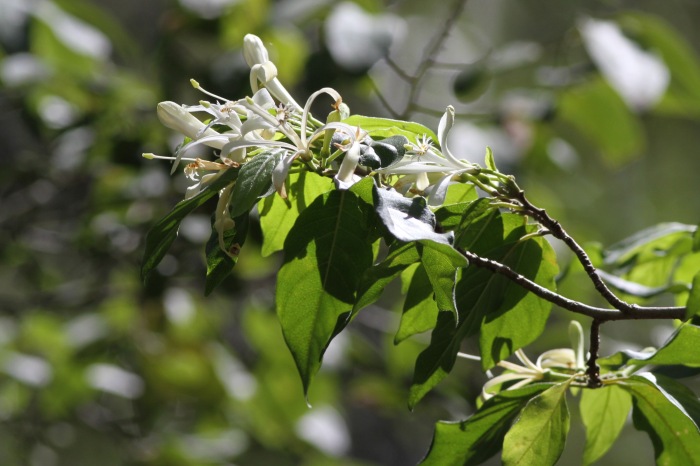
We failed to receive a single heavy downpour over the entire summer, a time that we normally receive most of our annual rainfall. I suppose these plants must “think” that summer has finally begun now that the rain has arrived. It will be interesting to see if the fruits develop normally in the cooler conditions of autumn and winter.
Not everything is out of season, however, and the annual White Cedar (Melia azedarach) fruit crop has begun to ripen. As every year, this coincides with large numbers of Australasian Figbirds descending on our property. Along with the native figs, White Cedars are among the most regular fruiters of our local trees, making them an important food source for local wildlife, especially in years like this one, when severe drought has limited the diversity of species that have successfully fruited.
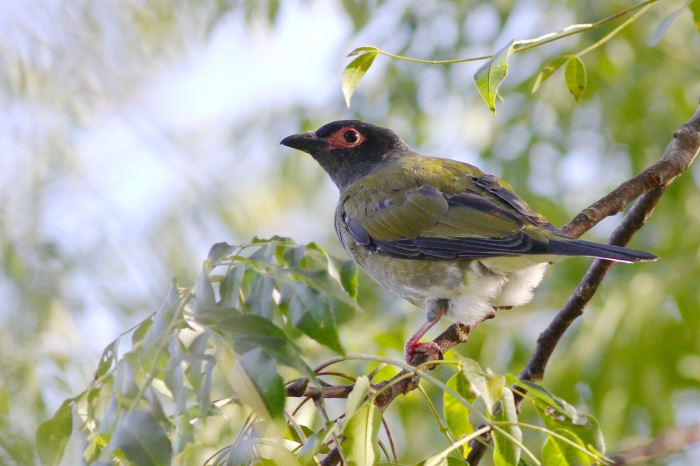
Before the rains started, our very hungry and thirsty local wallabies were spending quite a bit of time around our house, where they discovered the bird bath. We always refill this each afternoon so that the birds have a fresh source of water each day. However, we had to start refilling in the afternoon AND morning, to account for all the water being drunk by wallabies during the evening.
One thing I hadn’t noticed before was just how scarred so many are. This female Red-necked Wallaby is blind in her left eye.
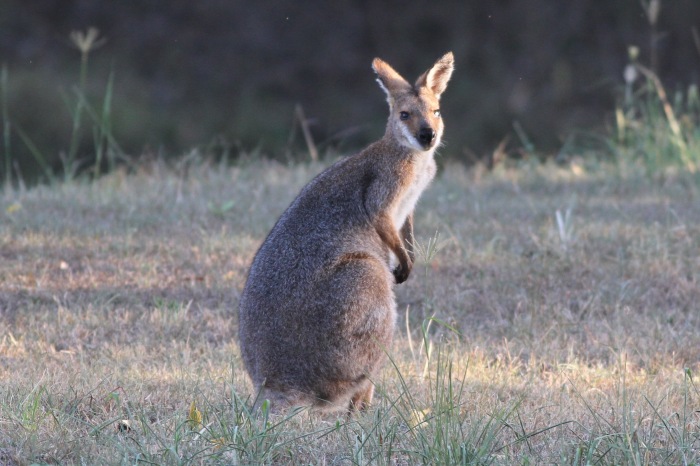
This male also had plenty of scars on his legs and ears.
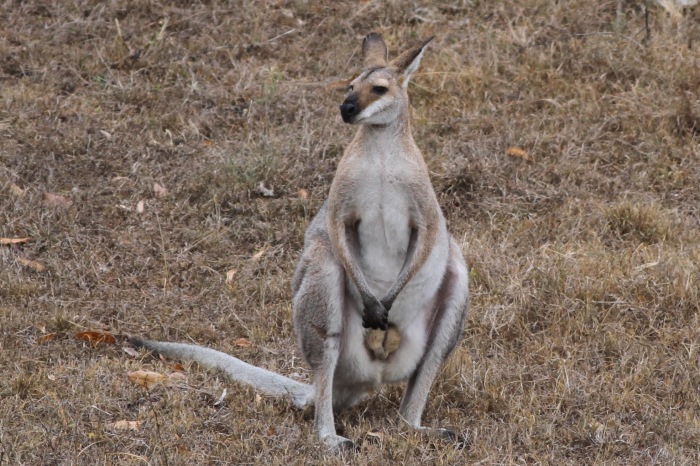
I took the previous photo while the Red-necked Wallaby was watching a pair of amorous Swamp Wallabies in the process of courting. The male Swamp Wallaby was relentlessly following the female and attempting to get up close and personal. Meanwhile, the Red-necked Wallaby just watched. At times, the pair of Swamp Wallabies would hop past within metres of the Red-necked Wallaby, but the two species never interacted. I found that odd, that the two species didn’t see each other as competitors. I suppose, given their very different dietary preferences (Swamp Wallabies prefer to browse shrubs, while Red-necked Wallabies prefer grass), competition between the two is minimal.

In response to March’s rain, I kicked off the 2019 planting season. In the limited time I have been home over the month, I’ve managed to get over 200 trees in the ground. Having learnt my lesson from last year, I have caged almost all the trees in chicken wire, to protect them from the Swamp Wallabies.
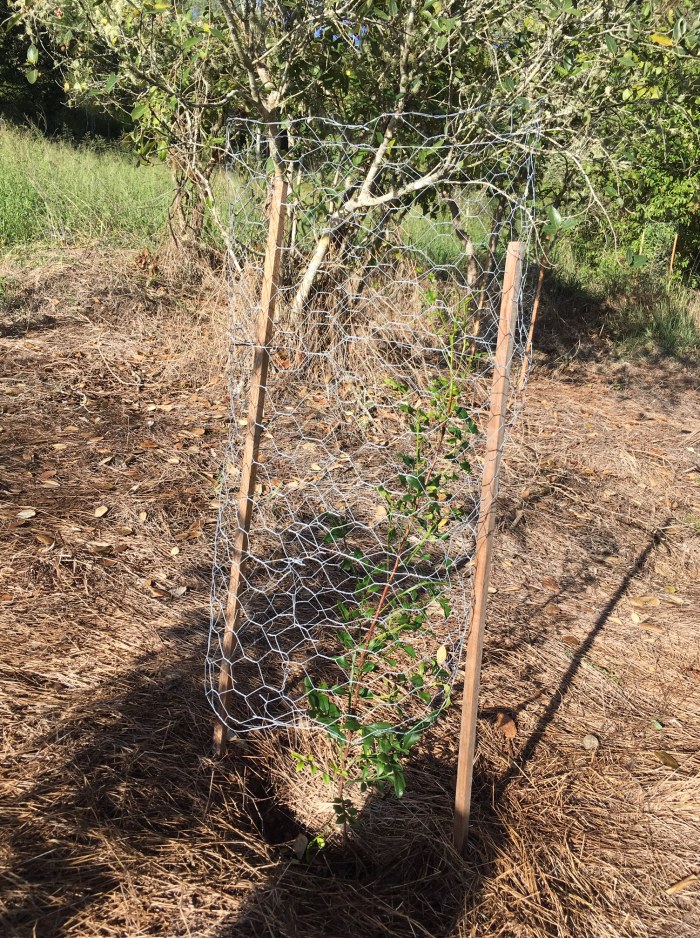
The only species I don’t cage are those that are too prickly for wallabies to eat. I also didn’t bother caging stinging trees (Dendrocnide photinophylla), as I figured their intensely painful hairs should protect them from hungry lips. I was wrong. Yesterday, one of my stinging trees had had all its leaves bitten off. The wallaby must have ultimately realised its mistake, as all the leaves had been spat out underneath the stem. Hopefully the throbbing gums the wallaby received will serve as some sort of aversion therapy, so that they leave my other trees alone!
Speaking of animals eating things they shouldn’t, this morning I watched this young Shining Bronze-cuckoo catch and eat a Monarch Butterfly (Danaus plexippus) caterpillar.
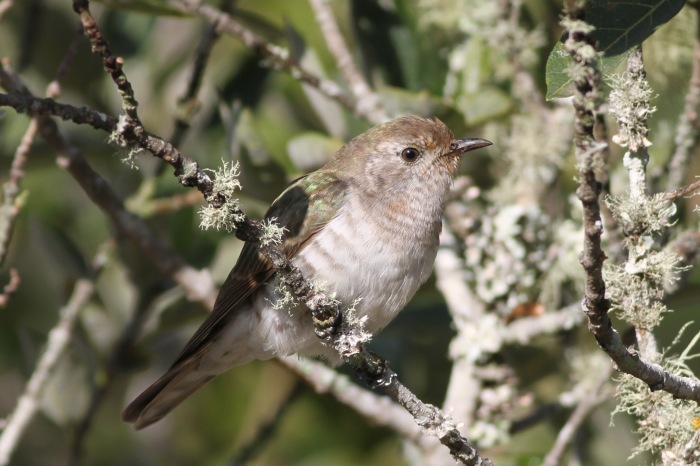
This photo was taken seconds before it flew down and grabbed the caterpillar from right beside me. I had always understood Monarchs to be poisonous to vertebrate predators, hence the bright patterns of the butterfly and its caterpillars. They supposedly gain these toxins from the milkweed they feed on. This cuckoo, however, swallowed the whole caterpillar. Admittedly, this is not an old bird. Based on its plumage, I’d say it only hatched last spring/summer and is probably not long been feeding itself. It is possible, therefore, that I witnessed it making a naive mistake, and that it later felt sick as a result. It is also possible that cuckoos are one of the few predators immune to the Monarch’s poison. Cuckoos are one of the very few Australian birds able to eat caterpillars possessing irritating hairs. Perhaps they simply have very high pain thresholds or an iron stomach!